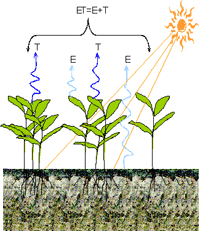Agricultural Research Division of IANR

West Central Research and Extension Center, North Platte
ORCID IDs
Date of this Version
2011
Citation
2011 ASABE Annual International Meeting, Sponsored by ASABE Gault House Louisville, Kentucky August 7 – 10, 2011
Abstract
Hormones are essential to the function and propagation of almost all organisms, yet the environmental fate of hormones is not well understood. Because these substances are so common in nature, the question is not whether they will be found, but rather at what concentrations and in what form (biologically active or inactive) will they be found. The objective of this research was to determine the effect of manure handling and application strategies on artificial hormone losses in runoff through the use of simulated rainfall. In 2008, rainfall simulations were conducted at the Haskell Agricultural Laboratory near Concord, NE (Latitude: 42o 23’ 33.6” N; Longitude: 96o 57’ 18.0” W). The soil at the site is of the Nora silty clay loam family. Field slope was approximately 8% and no-till practices and a corn-soybean rotation had been employed for the previous 7 years. The field study consisted of 3 replications of a check (no manure, no tillage); 2 animal treatments (w/hormones, w/o hormones); 2 manure handling practices (stockpile and compost); and two incorporation methods (moldboard plow+disk and disk). Simulated rainfall was applied within 24- hours of manure application and runoff samples were collected at five minute intervals beginning at runoff initiation. Analyses of runoff samples were conducted using liquid chromatography tandem mass spectrometry. Results of the study showed sporadic infrequent detection of very low concentrations artificial hormones among treatments with no distinct pattern. More samples were detected with treated composted manure plots compared to stockpile manure; on the other hand, moldboard plow with disk incorporation detected more samples compared to the other two methods. The mass transport and flow weighted concentrations varied within the range of 1635 μg/ha and 9.75 ng/L for melengestrol acetate to 10.73 μg/ha and 0.14 µg/L for 17α-trenbolone respectively among the treatments. It can be concluded that low levels of artificial hormones and some metabolites were detected in runoff samples after land application and, may be transported to nearby surface water sources.


Comments
Copyright 2011 ASABE. Used by permission.